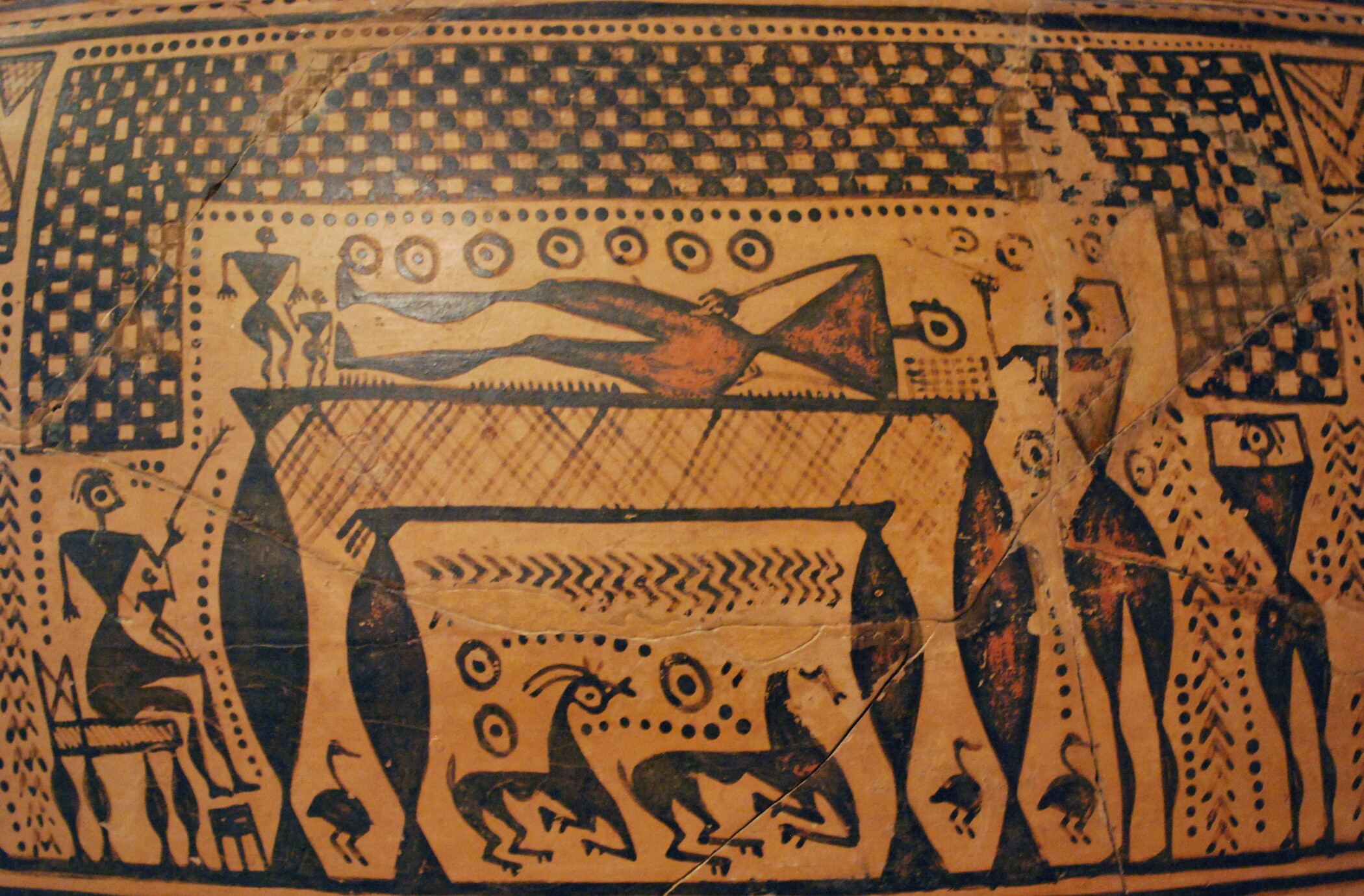Cultural variability and social organization in the early iron age
Towards the beginning of the early Iron Age several transformations in the material culture of Greece are striking. Particularly the appearance of cremation and individual inhumation burials was long held as the main argument for numerous historical reconstruction of early Greek history, however, this phase has only rarely been viewed from a cultural anthropological angle.
Some changes in Greek culture dating to the 12th and 11th centuries BCE have been traditionally perceived as evidence for an invasion of people from the north to Greece. These transformations are particularly perceptible in the burial rites of southern Greece, e.g. the change from multiple burials in champer tombs to single inhumations in cist tombs and shortly afterwards the widespread practice of cremation. This change was often identified as the legendary ›Dorian invasion‹ mentioned by some historiographers of the classical period. These tales developed into historical facts and formed the departure point for many reconstructions of the past in Greece and the Balkans.
The geographical focus
The aim of this project is not to search for Dorians in the Greek and Balkan prehistory but instead to reanalyze the archaeological data that fully addresses the already mentioned changes in an up-to-date interpretation. The area of interest comprises Serbia, Kosovo, FYR of Macedonia, and northern Greece (especially Macedonia and Chalkidike, and Thessaly). In the past scholarly debate and exchange of knowledge was difficult for political reasons but the time has come to overcome national and ideological barriers and begin an international scientific discussion.
The method
In this project new archaeological data from recent excavations will be analyzed and presented. Recently published finds and contexts from the northern Aegean and the geographical ›hinterland‹, mainly the central Balkan, allow for comparative studies. Modern scientific methods will be used in order to define the biological sex as well as family and other kin relationships of individuals from selected necropoleis. Strontium isotope analyses aid in acquiring information about mobility and exogamy or migration of people (groups). Radiocarbon analyses, statistical, and additional historical analyses of the burial rites, individual finds, and contexts permit the reconstruction of the social organization of the local communities. Lead isotope analyses of the burial gifts made of lead will provide information on the exchange networks and trade relations.
The aim
The research is focused on the socio-cultural aspects of every necropolis and its micro-regions that function as case studies. In this way it is the foundation for a new narrative of the interregional interaction in the area of ideology and ritual. Finally, new archaeological data and modern bioarcharchaeological analyses will lead to a modernized reconstruction of the regional social relationships in Greece and the Balkan.
Principal Investigator
Cooperations
- John Papadopoulos (Chair of the Archaeology Interdepartmental Program, UCLA, Los Angeles)
- Aleksandar Bulatović (Institute of Archaeology, Belgrade)
- Shafi Gashi (University of Prizren, Archaeological Institute of Kosovo, Pristina)
- Aleksandra Papazovska Sanev (Museum of Macedonia, Department of Archaeology, Skopje)
- Christophe Snoeck (Analytical, Environmental & Geo-Chemistry [AMGC], Vrije Universiteit Brussel)
- Bernard Weninger (Institut für Ur- und Frühgeschichte, Universität zu Köln)
- Mathias Mehofer (VIAS, Universität Wien)
Duration
since December 2017
Funding
FWF project P 30475
